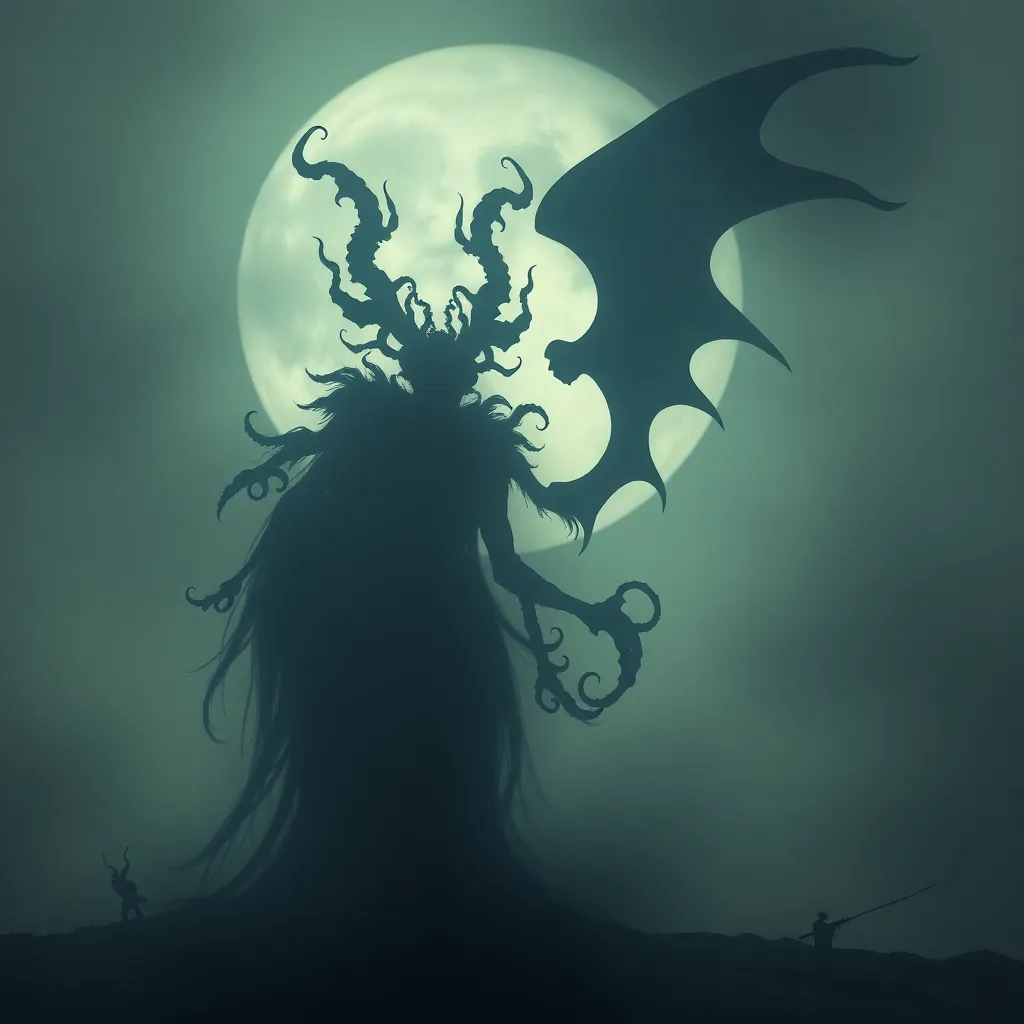Empusa’s Shadow in Asian Mythology: Exploring Analogues and Parallels
I. Introduction
Empusa, a fascinating figure from Greek mythology, is often described as a shape-shifting demon associated with seduction and fear. Traditionally depicted as a beautiful woman, she is said to prey on young men, embodying the dual nature of allure and danger. Understanding Empusa is essential as it opens a window into how cultures interpret similar archetypes across different mythologies.
Exploring mythological parallels among global cultures reveals common themes and societal concerns that transcend geographical boundaries. This article aims to delve into the nature of Empusa, and uncover her analogues in various Asian mythologies, highlighting shared characteristics and themes.
The structure of the article will first provide an overview of Empusa’s characteristics, followed by an introduction to Asian mythology, and then an exploration of both East and South Asian mythological figures that share similarities with Empusa. Finally, the article will analyze the cultural significance of these figures and compare their themes and symbolism.
II. The Nature of Empusa in Greek Mythology
Empusa is often depicted in Greek mythology as a demon or a spirit that can transform her appearance at will. She is typically characterized by her ability to seduce and manipulate her victims, drawing them into a false sense of security before revealing her true, monstrous form. This duality makes her a compelling figure in Greek folklore.
Empusa’s role in Greek culture extends beyond mere folklore; she represents the archetype of the dangerous woman, a motif prevalent in many cultures. Her symbolism is multifaceted: she embodies fear of the unknown, the dangers of desire, and the consequences of temptation. In this way, Empusa serves as a cautionary figure, warning against unchecked passions and the perils of seduction.
III. Overview of Asian Mythology
Asian mythology is incredibly diverse, encompassing a wide range of traditions, beliefs, and narratives across different cultures. From the rich tapestry of Hindu stories in India to the intricate folk tales of China and Japan, the themes often reflect the societies from which they arise.
Common themes in Asian mythologies include:
- The interplay of good and evil
- The significance of nature and the cosmos
- The exploration of life, death, and rebirth
- The role of supernatural beings and deities
Female figures in Asian mythologies often play crucial roles, serving as both protectors and destroyers. Their narratives frequently explore themes of beauty, seduction, and the complex dynamics of gender relations within their respective cultures.
IV. Analogues of Empusa in East Asian Mythologies
A. The Yūrei in Japanese Folklore
The Yūrei are restless spirits in Japanese folklore that share similarities with Empusa. Like Empusa, Yūrei are often portrayed as beautiful women who have suffered a tragic fate. They are known to haunt the living, driven by a desire for vengeance or unresolved issues from their past lives. The connection lies in their seductive yet dangerous nature, as they both lure individuals with their allure.
B. The Huli Jing in Chinese Mythology
The Huli Jing, or fox spirit, is a complex figure in Chinese folklore, known for its ability to shape-shift and seduce men. While the Huli Jing can serve as a benevolent protector, she also embodies the potential for danger and deception, much like Empusa. This duality offers a rich ground for comparison, as both figures navigate the realms of beauty and peril.
C. The Jiangshi in Chinese Culture
The Jiangshi, or “hopping vampire,” is another significant figure in Chinese mythology. While primarily associated with themes of death and the afterlife, the Jiangshi also reflects transformation and the consequences of life choices. Though different in nature from Empusa, the Jiangshi’s connection to the themes of seduction and danger can be likened to Empusa’s predatory traits.
V. Analogues of Empusa in South Asian Mythologies
A. The Chudail in Indian Folklore
The Chudail is a spirit in Indian folklore often depicted as a woman with long hair and a vengeful disposition. Like Empusa, she is associated with themes of seduction and danger, preying on men and reflecting societal fears surrounding female power and sexuality.
B. The Apsara
Apsaras are celestial nymphs in Hindu mythology, celebrated for their beauty and grace. However, they also possess a darker aspect, where their seductive nature can lead to moral dilemmas and chaos among gods and men. This complexity mirrors Empusa’s dual nature as a seductress and a harbinger of doom.
C. The Rakshasas
Rakshasas are demonic entities in Hindu mythology, often portrayed as malevolent beings who disrupt societal harmony. Their shape-shifting ability and propensity for deception align closely with Empusa’s characteristics, showcasing the theme of transformation in both mythologies.
VI. Cultural Significance and Interpretation of These Figures
Female figures like Empusa, the Yūrei, Huli Jing, Chudail, and Apsara play significant roles in shaping cultural narratives across their respective societies. They often serve as reflections of societal values, fears, and the complexities of gender dynamics.
The interplay of fear and fascination in these mythological representations reveals much about cultural anxieties regarding femininity, sexuality, and power. These figures challenge traditional gender roles and often highlight the consequences of male desire and the dangers of underestimating women.
VII. Comparative Analysis of Themes and Symbolism
When examining these mythological figures, common themes emerge:
- Seduction: Many of these figures use their allure to manipulate and deceive.
- Transformation: Shape-shifting serves as a metaphor for the fluidity of identity and power.
- Death: Themes surrounding mortality are prevalent, reflecting cultural concerns about life and the afterlife.
These mythological figures not only entertain but also serve as instruments for understanding cultural anxieties, particularly regarding gender dynamics. They reveal how societies conceptualize female power and the fears that accompany it.
VIII. Conclusion
This exploration of Empusa and her analogues in Asian mythology has highlighted fascinating parallels across cultures, emphasizing the shared themes of seduction, transformation, and mortality. Understanding these figures within their mythological contexts enriches our appreciation of global narratives and societal values.
Recognizing the relevance of these mythological parallels fosters a deeper understanding of human nature and cultural expressions. Future research could explore further connections between different mythologies, offering insights into the universal themes that shape our collective imagination.



